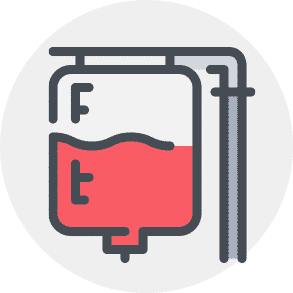Need an affordable
Medicare Advantage Part C?
$0 monthly premium Medicare plans may be available in your area.
Need an affordable
Medicare Advantage Plan (Part C)?
$0 monthly premium Medicare plans may be available in your area.
Medicare Advantage Part C
What is a Medicare Advantage plan?
Medicare Advantage Part C, or Medicare Advantage, insurance often includes every type of Medicare coverage in one health plan. It’s offered by private insurance companies contracted through CMS to provide a Medicare benefits package as an alternative to Original Medicare.
Medicare Advantage is optional, but to obtain this private insurance, you must also have Original Medicare, Part A, and Part B. You also continue to pay your Part B premium if you have a Medicare Advantage plan. While Medicare Advantage plans are required to provide all Medicare Part A and Medicare Part B benefits (except hospice care), plans can also include different additional benefits, which vary among the individual private health insurers.
Many Medicare Advantage plans include prescription drug coverage. Some plans might have a lower deductible, while also allowing you to pay a smaller share of the remaining costs. Medicare Advantage plans may even cover certain health care services that Original Medicare, Part A, and Part B, does not cover, like eye exams, hearing aids, dental care, or health care received while traveling outside the United States.
Is Medicare Advantage Right for You?
Medicare Advantage data shows close to a two-fold increase in enrollment from 2010 to 2020. In 2020, 36% or 24.1 million of people enrolled in a Medicare program joined Medicare Advantage. In 2000 for comparison, 17% of all Medicare beneficiaries (6.8 million people) selected a Medicare Advantage Plan.
You have options when it comes to selecting a Medicare plan. It’s essential to understand what each plan offers and compare it to your lifestyle. Let’s take a look at some of your options.
Types of Medicare Advantage (Part C) plans
It’s important to understand the differences between the types of Medicare Advantage plans to see which works best for you. There are several different types of Medicare Advantage plans:
🔹HMO (Health Maintenance Organization plan): Lets you see doctors and other health professionals who participate in its provider network. If your doctor is already in network, it could be a good option because you tend to pay less out-of-pocket with in-network doctors.
🔹PPO (Preferred Provider Organization plan): Covers both in- and out-of-network providers, giving you the freedom to choose any doctor that accepts Medicare assignment, which can work if you prefer that kind of flexibility.
🔹PFFS (Private Fee-for-Service plan): The plan determines how much it will pay providers and how much you must pay when you get care. The treating doctor has to accept the plan’s payment terms and agree to treat you. If the doctor doesn’t agree to those terms, then the PFFS plan will not cover services through that doctor.
🔹SNP (Special Needs Plans): Are especially for people who have certain special needs. The three different SNP plans cover Medicare beneficiaries living in institutions, those who are dual-eligible for Medicaid and Medicare, and those with chronic conditions such as diabetes, End Stage Renal Disease (ESRD), or HIV/AIDS. This type of plan always includes prescription drug coverage.
🔹HMO-POS (Health Maintenance Organization – Point of Service plan): Covers both in- and out-of-network health services, but at different rates. You pay less out-of-pocket when you go to in-network doctors, labs, hospitals, and other health care providers. MSA (Medical Savings Account plan): Includes both a high deductible and a bank account to help you pay that deductible.
The amount deposited into the account varies from plan to plan. The money is tax-free as long as you use it on IRS-qualified medical expenses, which include the health plan’s deductible.
Eligibility for Medicare Advantage plans
Medicare Advantage plan eligibility is based on your eligibility for Original Medicare, Part A and Part B (except if you have ESRD). Generally, if you have Medicare Part A and Part B, you are eligible for Medicare Part C. However, you must live in the service area for the Medicare Advantage plan that you’re considering.
If you have other health insurance coverage, for example through an employer or union, ask your plan administrator about that plan’s rules before you enroll in a Medicare Advantage plan.
In some cases, you may lose your other coverage if you enroll in the Medicare Advantage plan and you may be unable to get it back if you change your mind later. Enrollment Periods for Medicare Advantage plans You may only enroll in a Medicare Advantage plan during specified election periods:
🔹 Initial Coverage Election Period: You can enroll into a Medicare Advantage plan or Medicare Advantage Prescription Drug plan when you first become eligible for Medicare. Your Initial Coverage Election Period (ICEP), is a seven-month period that starts 3 months before the month you turn 65, includes the month you turn 65, and ends 3 months after the month you turn 65.
If you are under age 65 and you receive Social Security disability, you qualify for Medicare in the 25th month after you begin receiving your Social Security benefits.If you fall into this category, you may enroll into a Medicare Advantage plan 3 months before your month of eligibility, during the month of eligibility, and 3 months after the month of eligibility. For example, if your Medicare Part A and Part B coverage begins in May, your Medicare Advantage plan ICEP is February through August.
🔹Annual Election Period: The Annual Election Period (AEP), also called Open Enrollment Period for Medicare Advantage and Medicare prescription drug coverage, is October 15 through December 7 every year.
The plan coverage you choose during the AEP begins on January 1 of the next year. It allows Medicare beneficiaries to add, change, or drop their current coverage. You can use this period to enroll into a Medicare Advantage or Medicare Prescription Drug Plan or switch plans. If you’re already enrolled into a Medicare plan, you can use this period to disenroll from your plan.
🔹Medicare Advantage Open Enrollment Period (OEP): If, after enrolling in a Medicare Advantage plan, you change your mind, you can switch back to Original Medicare from January 1 through March 31. If you would be losing prescription coverage as a result of the switch, you can also enroll into a stand-alone Medicare Part D Prescription Drug Plan during this time, if you wish.
🔹Special Election Period: Generally, once you enroll into a Medicare Advantage plan, you stay enrolled in the plan until the next Annual Election Period (AEP) opens. However, there are some life events that might qualify you for a Special Election Period (SEP) during other times of the year, so you can make a change to your Medicare Advantage coverage. Some examples of these life events include (but aren’t limited to):
- Moving outside your Medicare Advantage plan’s service area
- Qualifying for Extra Help (a program to help you pay for prescription drugs)
- Moving into an institution (such as a nursing home)
Medicare Advantage v. Medigap (Medicare Supplement)
What’s the difference between Medicare Advantage and Medicare Supplement (Medigap)?
It’s essential to know that you cannot enroll in both plans and must select between one or the other. A Medicare Supplement (Medigap) plan must be added to Original Medicare for unmet healthcare coverage. When Original Medicare misses out-of-pocket expenses like co-pays, co-insurance and deductibles, Medigap (private insurance) will pay most of what’s left in the gap. Bundled benefits make Part C plans a popular choice, but local/regional networks limit where you can use the plan.
If you like to travel around the U.S. during the year, Original Medicare with a Medigap plan may be the right choice for you. Find out more Many Medicare beneficiaries opt for a Medicare Advantage plan. To see if this route may be a good idea for you, contact eHealth’s licensed insurance agents. We have the knowledge to answer your Medicare Advantage plan questions.
Compare plans today
Call a licensed insurance agent
1 (877) 255-0284
TTY 711, 24/7
Medicare Advantage (Part C)
What is a Medicare Advantage plan?
Medicare Advantage Part C, or Medicare Advantage, insurance often includes every type of Medicare coverage in one health plan. It’s offered by private insurance companies contracted through CMS to provide a Medicare benefits package as an alternative to Original Medicare.
Medicare Advantage is optional, but to obtain this private insurance, you must also have Original Medicare, Part A, and Part B. You also continue to pay your Part B premium if you have a Medicare Advantage plan. While Medicare Advantage plans are required to provide all Medicare Part A and Medicare Part B benefits (except hospice care), plans can also include different additional benefits, which vary among the individual private health insurers.
Many Medicare Advantage plans include prescription drug coverage. Some plans might have a lower deductible, while also allowing you to pay a smaller share of the remaining costs. Medicare Advantage plans may even cover certain health care services that Original Medicare, Part A, and Part B, does not cover, like eye exams, hearing aids, dental care, or health care received while traveling outside the United States.
“Medicare Advantage offers at least the same coverage as Original Medicare, and may offer additional benefits. It’s one way of adding coverage for vision, dental, dentures, and more.”
Is Medicare Advantage Right for You?
Medicare Advantage data shows close to a two-fold increase in enrollment from 2010 to 2020. In 2020, 36% or 24.1 million of people enrolled in a Medicare program joined Medicare Advantage. In 2000 for comparison, 17% of all Medicare beneficiaries (6.8 million people) selected a Medicare Advantage Plan.
You have options when it comes to selecting a Medicare plan. It’s essential to understand what each plan offers and compare it to your lifestyle. Let’s take a look at some of your options.
Types of Medicare Advantage (Part C) plans
It’s important to understand the differences between the types of Medicare Advantage plans to see which works best for you. There are several different types of Medicare Advantage plans:
🔹HMO (Health Maintenance Organization plan): Lets you see doctors and other health professionals who participate in its provider network. If your doctor is already in network, it could be a good option because you tend to pay less out-of-pocket with in-network doctors.
🔹PPO (Preferred Provider Organization plan): Covers both in- and out-of-network providers, giving you the freedom to choose any doctor that accepts Medicare assignment, which can work if you prefer that kind of flexibility.
🔹PFFS (Private Fee-for-Service plan): The plan determines how much it will pay providers and how much you must pay when you get care. The treating doctor has to accept the plan’s payment terms and agree to treat you. If the doctor doesn’t agree to those terms, then the PFFS plan will not cover services through that doctor.
🔹SNP (Special Needs Plans): Are especially for people who have certain special needs. The three different SNP plans cover Medicare beneficiaries living in institutions, those who are dual-eligible for Medicaid and Medicare, and those with chronic conditions such as diabetes, End Stage Renal Disease (ESRD), or HIV/AIDS. This type of plan always includes prescription drug coverage.
🔹HMO-POS (Health Maintenance Organization – Point of Service plan): Covers both in- and out-of-network health services, but at different rates. You pay less out-of-pocket when you go to in-network doctors, labs, hospitals, and other health care providers. MSA (Medical Savings Account plan): Includes both a high deductible and a bank account to help you pay that deductible.
The amount deposited into the account varies from plan to plan. The money is tax-free as long as you use it on IRS-qualified medical expenses, which include the health plan’s deductible.
Eligibility for Medicare Advantage plans
Medicare Advantage plan eligibility is based on your eligibility for Original Medicare, Part A and Part B (except if you have ESRD). Generally, if you have Medicare Part A and Part B, you are eligible for Medicare Part C. However, you must live in the service area for the Medicare Advantage plan that you’re considering.
If you have other health insurance coverage, for example through an employer or union, ask your plan administrator about that plan’s rules before you enroll in a Medicare Advantage plan.
In some cases, you may lose your other coverage if you enroll in the Medicare Advantage plan and you may be unable to get it back if you change your mind later. Enrollment Periods for Medicare Advantage plans You may only enroll in a Medicare Advantage plan during specified election periods:
🔹 Initial Coverage Election Period: You can enroll into a Medicare Advantage plan or Medicare Advantage Prescription Drug plan when you first become eligible for Medicare. Your Initial Coverage Election Period (ICEP), is a seven-month period that starts 3 months before the month you turn 65, includes the month you turn 65, and ends 3 months after the month you turn 65.
If you are under age 65 and you receive Social Security disability, you qualify for Medicare in the 25th month after you begin receiving your Social Security benefits. If you fall into this category, you may enroll into a Medicare Advantage plan 3 months before your month of eligibility, during the month of eligibility, and 3 months after the month of eligibility. For example, if your Medicare Part A and Part B coverage begins in May, your Medicare Advantage plan ICEP is February through August.
🔹Annual Election Period: The Annual Election Period (AEP), also called Open Enrollment Period for Medicare Advantage and Medicare prescription drug coverage, is October 15 through December 7 every year.
The plan coverage you choose during the AEP begins on January 1 of the next year. It allows Medicare beneficiaries to add, change, or drop their current coverage. You can use this period to enroll into a Medicare Advantage or Medicare Prescription Drug Plan or switch plans. If you’re already enrolled into a Medicare plan, you can use this period to disenroll from your plan.
🔹Medicare Advantage Open Enrollment Period (OEP): If, after enrolling in a Medicare Advantage plan, you change your mind, you can switch back to Original Medicare from January 1 through March 31. If you would be losing prescription coverage as a result of the switch, you can also enroll into a stand-alone Medicare Part D Prescription Drug Plan during this time, if you wish.
🔹Special Election Period: Generally, once you enroll into a Medicare Advantage plan, you stay enrolled in the plan until the next Annual Election Period (AEP) opens. However, there are some life events that might qualify you for a Special Election Period (SEP) during other times of the year, so you can make a change to your Medicare Advantage coverage. Some examples of these life events include (but aren’t limited to):
- Moving outside your Medicare Advantage plan’s service area
- Qualifying for Extra Help (a program to help you pay for prescription drugs)
- Moving into an institution (such as a nursing home)
Medicare Advantage v. Medigap (Medicare Supplement)
What’s the difference between Medicare Advantage and Medicare Supplement (Medigap)?
It’s essential to know that you cannot enroll in both plans and must select between one or the other. A Medicare Supplement (Medigap) plan must be added to Original Medicare for unmet healthcare coverage.
When Original Medicare misses out-of-pocket expenses like co-pays, co-insurance and deductibles, Medigap (private insurance) will pay most of what’s left in the gap. Bundled benefits make Part C plans a popular choice, but local/regional networks limit where you can use the plan. If you like to travel around the U.S. during the year, Original Medicare with a Medigap plan may be the right choice for you.
Find out more Many Medicare beneficiaries opt for a Medicare Advantage plan. To see if this route may be a good idea for you, contact eHealth’s licensed insurance agents. We have the knowledge to answer your Medicare Advantage plan questions.




